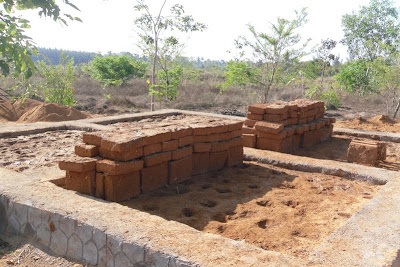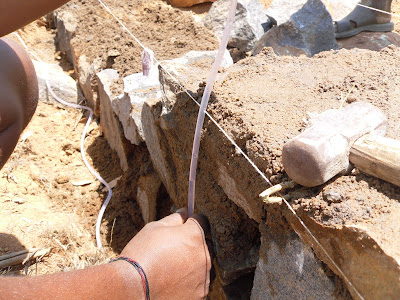
our expert artist, siddarth, has calligraphed this scorecard with pR's production data on a 'till-date' basis.
all values are in kgs.
a more elaborate, detailed version of the data is here.








































“Twenty years ago I was a gung ho growth-wallah. Today I’m just a growth-wallah: I’m no longer gung ho. I’ve realised if it is to be a choice between 9 percent growth and negative impact on environment and livelihood security and 7 percent growth with ecological security — it’s much wiser to opt for the latter. Twenty years ago I may have chosen the former. Today I would choose the latter.”the PM and sonia with their reasons for picking him...
When Jairam asked the prime minister, “Sir, why me?” the prime minister replied: “The ministry has acquired a bad reputation for corruption and rent-seeking. I want you to clean up the system but I don’t want environment to be a hurdle to growth. You understand the compulsions of growth better than most.”some startling statistics...Sonia, however, had another, simpler, message altogether. Asked for her vision for him, she said, “Acquit the mandate the environment ministry was set up for. Protect India’s natural resources. Safeguard people’s livelihoods.”
Consider just one statistic put out by Vikram Singh Mehta, chairman of Shell India, and the shocking truth of this will hit home: it takes 9,200 litres of water to produce one litre of diesel.what i always maintained about MMS and MSA is reiterated...
On employment too, Claude Alvares has a staggering statistic. According to NCAER figures, the formal economy in India employs only 28 million people today. Back in 1950, it was 25 million. That’s just a three million increase in jobs in the formal sector over 60 years. At an average, each of those jobs has been generated at an investment cost of Rs.1 crore. This means more than 80 percent of India is employed in the non-formal sector and is looking after themselves, outside the supposedly golden halo of the growth story.
He (Pavan Sukhdev) reels out fascinating statistics in support of this: 450 million people in India live off subsistence agriculture, wetlands and forests. Nature provides them 90 percent of their income. How was industry going to provide all these people jobs if they are driven off their land? “Those who think they have a purely industrial solution to India’s poverty are living in cuckoo-land,” he says. “What are we going to do, make them Ferrari makers? What is the economic model that is going to generate alternative employment for 450 million people?”
Former power secretary R Vasudevan has similar things to say. “The GDP is the narrowest possible measure of growth. We cannot worship growth just as a percentage,” he says. “We have to ask ourselves, is all this really enabling us? The problem is both Manmohan Singh and Montek Singh Ahluwalia have had only World Bank exposure. They have never worked on the field so they do not understand ground realities.”while he has had to maintain his poise over much much pressure, it is sad that he may not last long.
Over the past 20 months, Jairam has grown more shackled with every passing day. He’s almost lost his job thrice and has had run-ins with almost all his colleagues: Ministers for surface transport, shipping, coal, power, steel, aviation, agriculture, water and science. Queues of detractors line up routinely at the prime minister’s door asking for his ouster. In the last cabinet reshuffle, in fact, he was a “goner”, says a Congress source, had Sonia not intervened. Despite this, he may still lose his job by May.
| Jan – Feb | |
| Tomato | 19.91 |
| Radish | 10.32 |
| Pumpkin | 5.4 |
| Okra | 1.27 |
| Brinjal | 1.62 |
| Kaaramani | 0.29 |
| Bitter gourd | 2.39 |
| Ridge Gourd | 0.91 |
| Winged Bean | 1.2 |
| Beans | 3.1 |
| Avarai | 1.51 |
| Total | 47.92 |